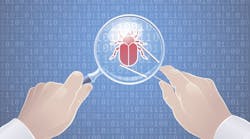Alexandria, VA – The Security Industry Association (SIA) recently partnered with the Smart Card Alliance to host an industry and government forum to discuss the impact of FIPS 201 on physical access control system (PACS) implementations, especially legacy installations. During the forum held on December 13, 2005, members of the National Institute of Standards and Technology (NIST), authors of FIPS 201, briefed panelists and attendees from the federal government, Smart Card Alliance and SIA on the current interpretations of specification documents relevant to FIPS 201.
During the panel presentations, representatives from SIA stressed the importance of establishing a migration strategy for the implementation of FIPS 201 including a timeline for compliance with the new guidelines.
“It is crucial that we define a migration strategy for FIPS 201 implementations, especially with regard to the installed base of PACS in the government space,†said Mark Visbal, director of research and technology at SIA.
James Lesniak, staff engineer for Underwriters Laboratories (UL), detailed the process for access control systems to receive the UL Security Mark, which can take six months or longer to complete.
“It is important to communicate realistic timelines to the government when it comes to the development of UL-listed next-generation access control systems that are capable of fully supporting FIPS 201 objectives,†Visbal continued.
Representatives from Smart Card Alliance outlined open technical issues and encouraged NIST to establish a test data model in order for companies to build products and test their compliance with FIPS 201 guidelines.
“Open forums like this event involving NIST and other government agencies and industry stakeholders are critically important,†said Randy Vanderhoof, executive director of the Smart Card Alliance. “Our aim is to encourage a regular dialog on technical issues and policies that will have a positive impact on the industry’s readiness to satisfy the HSPD 12 implementations beginning this year.â€
The event was attended by more than 120 industry and government representatives. A follow-up meeting is planned in early spring 2006.

